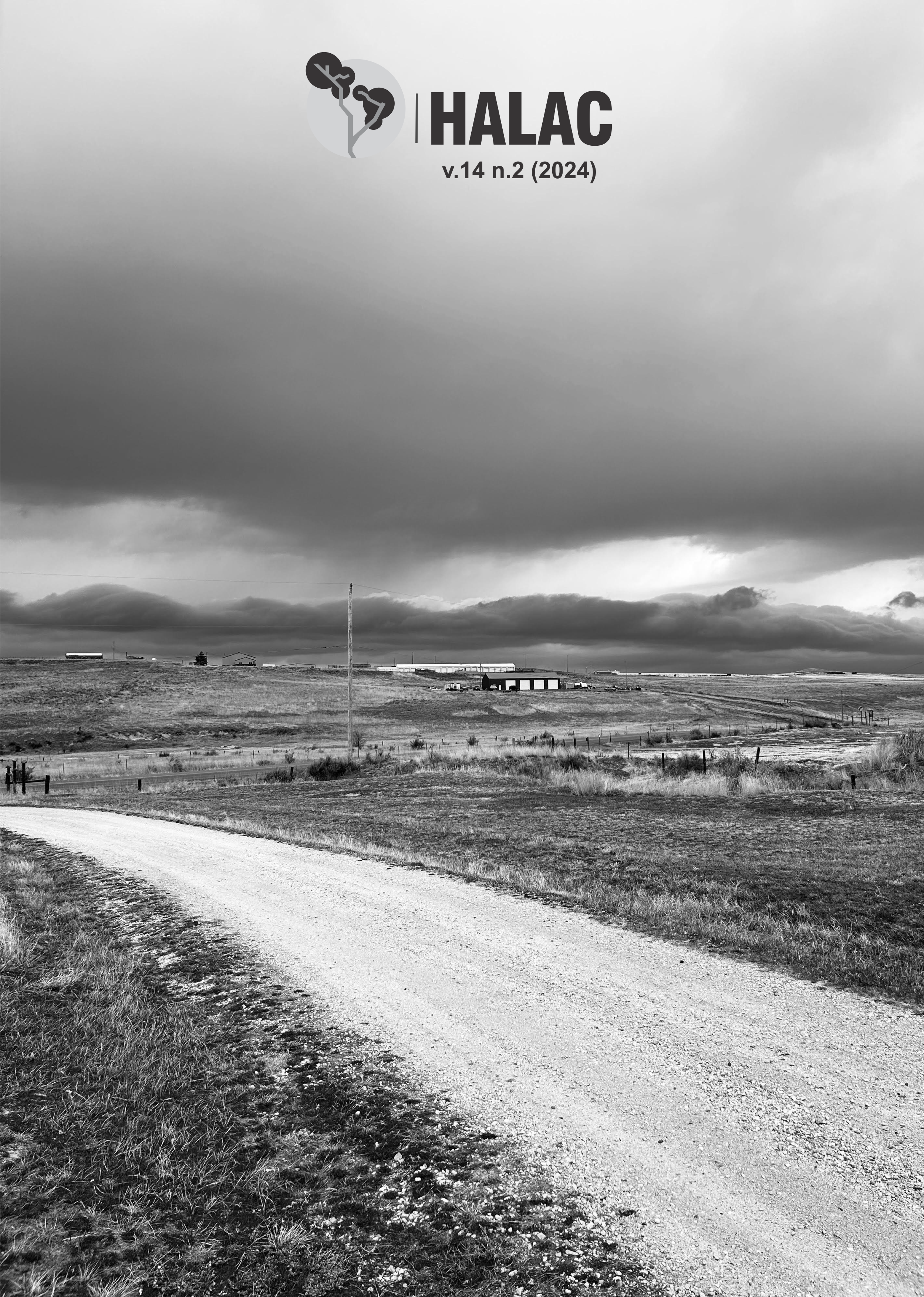The Climate Risks of the Amazon framed by Journalism Independent
DOI:
https://doi.org/10.32991/2237-2717.2024v14i2.p137-161Keywords:
risk communication, climate change risks, digital and independent journalism, AmazoníaAbstract
The aim of this paper is to analyse how climate risks related to the Amazon are framed in two independent platforms that produce journalism from the region and disseminate information in Portuguese, English and Spanish. The paper first analyses how information about the Amazon region has been produced. Then, based on the Framing analysis, it systematises how climate risks are associated with Amazonían issues in 41 articles on the two platforms, InfoAmazonía and Sumaúma. The study was conducted between September and December 2022, a period that includes the presidential elections in Brazil and the 27th United Nations Climate Conference. We observe the extent to which the debate on climate issues is framed from the perspective of politics in both Spain and Brazil. However, the independent Amazon platforms have added a more complex analysis of the issue. The results show that the two platforms argue that the climate crisis is caused by human activity and is considered a cross-cutting issue with the rainforest as the world's focal point for action and prevention. The frames chosen to frame the issue in terms of anti-speciesism and prioritise the voice of local characters and scientists. We conclude that the interpretative packages of both are disruptive, as there is a strong critique of capitalist logics and, therefore, the themes involving the forest and the climate have more plural and critical frames.
.
References
Amaral, Otacilio et al. Pesquisa em Comunicação na Amazônia. Belém: FADESP, 2010.
Amazonia. Jornalismo em chamas. Repórteres sem Fronteiras, setembro de 2023.
Boff, F. “Banzeiro Òkòtó: giro descolonial e pensamento de borda no jornalismo de Eliane Brum”. Revista dispositiva, v.11, n.20, (2022): 5-18. https://doi.org/10.5752/P.2237-9967.2022v11n20p5-18
Barbosa, C. Jornalismo Especializado na Amazônia. Manaus: Editora da Universidade Federal do Amazonas, 2022.
Dias, B.S.N. “América latina por uma epistemologia decolonial da comunicação”. Cadernos Prolam. USP-Brazilian Journal of Latin American Studies, v.19, n.38, (2020): 46-74. https://doi.org/10.11606/issn.1676-6288.prolam.2020.170987
Flôres, V.S. “Midiatização amazônica: a construção sistêmico-discursiva do infoamazonia”, Tesis de maestria, Curso de Pós-Graduação em Comunicação, da Universidade Federal de Santa Maria, 2017. http://repositorio.ufsm.br/handle/1/12565
Anjos, A.B. “Novo governo Bolsonaro significa “certeza de que perderemos a Amazônia”, diz pesquisadora”, Publica, 12 de octubre de 2022.
Beling, E. “Alternativas para enfrentar la crisis climática. ¿Cómo defienden los Bienes Comunes los medios de comunicación no hegemónicos?”. Observatorio Medioambiental, n.25, (2022): 25-42. http://dx.doi.org/10.5209/OBMD.85269
Botelho, J. “Jornalismo: falta de veículos abre espaço para desinformação e reprodução de releases em sites do Amazonas”, InfoAmazonía, 7 de marzo de 2022.
Ferreira, F.; Krefta, N. M.; Rodrigues, C. A. “A Praxis da Ecologia de Saberes: entrevista de Boaventura de Sousa Santos”. Tempus – Actas De Saúde Coletiva, v. 8, n.2, (2014): 331-338. https://doi.org/10.18569/tempus.v8i2.1530.
Costa, V. “À sombra da floresta: os sujeitos amazônicos entre estereótipo, invisibilidade e colonialidade no telejornalismo da Rede Globo”. Tese Doutorado em Comunicação, Niterói: UFF, 2011.
Costa, A.; Ventura, J.; Oliveira, I.; Ventura Neto, R. “Apontamentos interpretativos e jornalísticos sobre a Amazônia: o discurso de Bolsonaro na ONU”. Revista Mídia e Cotidiano, v.16, n.3, (2022): 259-282. https://doi.org/10.22409/rmc.v16i3.52398
Di Felice, M.; Pereira, Eliete Da Silva (Org.). Redes e ecologias comunicativas indígenas: as contribuições dos povos originários à teoria da comunicação. São Paulo: Paulus. – Coleção Comunicação, 2017.
Entman, R.M. “Framing: Toward clarification of a fractured paradigm”. Journal of Communication, v.43, n. 4, (1993): 51–58.
Gamson, W.; Modigliani, A. “Media discurse and public opinion on nuclear power: a construcionist approach”. American Journal of Sociology, v.95, n.1, (1989): 1–37.
Goffman, E. Frame analysis: an essay on the organization of experience. Cambrigde: Harvard University Press, 1974.
Laté ozano-Ascencio, Carlos, Franz-Amaral, Marcia, Puertas-Cristóbal, Esther. (2022). Las catástrofes y los desastres en las noticias sobre el cambio climático en España de 2019 a 2021. Estudios sobre el Mensaje Periodístico 28 (3), 537-548 págs. ISSN: 1134-1629. https://dx.doi.org/10.5209/esmp.80591
Lozano-Ascencio, Carlos., Franz-Amaral, Marcia, Puertas-Cristóbal, Esther. (2020) Los relatos periodísticos de riesgos y catástrofes en las televisiones de España. Revista Mexicana de Investigación Educativa RMIE, 2020, VOL. 25, NÚM. 87, 1183-1209 págs. ISSN-e: 2594-2271. http://www.comie.org.mx/v5/sitio/wp-content/uploads/2020/11/RMIE_87.pdf
Manifesto. “Jornalismo do centro do mundo”, 13 de septiembre de 2022, https://sumauma.com/quem-somos/
Munaro, L.F. “A Amazônia na imprensa do Brasil império: dos viajantes à consolidação da soberania nacional (1822-1880)”. Revista Aturá, vol. 4, n. 3, Setembro-Dezembro. 2020.
Mapa Vivo de Mídias da Amazônia (s.f). Amazonía. https://infoAmazonía.org/redecidada/mapa/
Observatorio de la Comunicación del Cambio Climático. https://observatoriocomunicacc.es/
Pereira, E. S.; Di Felice, M. “As qualidades ecológicas das redes indígenas no Brasil”. Chasqui, Revista Latinoamericana de Comunicación, n.147, (2021): 201-220.
Pesquisas Fapesp [Paulo Artaxo] (s.f, 2020). A importância da Amazônia na regulação do clima do planeta [Archivo de video] Youtube. bit.ly/3YYUlg8
Vimieiro, A.C.; Dantas, M. “Entre o explícito e o implícito: proposta para a análise de enquadramentos da mídia”. Revista Luminia 3(2), (2009): 1-16. bit.ly/3IpmDJy
Downloads
Published
How to Cite
Issue
Section
License
Copyright (c) 2024 Marcia Franz Amaral, Carlos Lozano Ascencio, Esther Puertas Cristóbal

This work is licensed under a Creative Commons Attribution-NonCommercial 4.0 International License.
This journal offers immediate free access to its content, following the principle that providing free scientific knowledge to the public provides greater global democratization of knowledge.
As of the publication in the magazine the authors have copyright and publication rights of their articles without restrictions.
The HALAC Magazine follows the legal precepts of the Creative Commons - Attribution-Non-Commercial 4.0 International license. 




